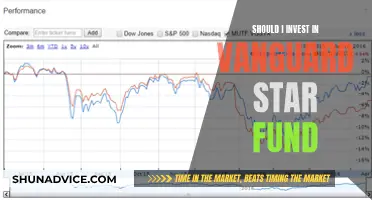
In India, salaried professionals and employees must submit investment proofs annually so that their employer deducts the correct amount of TDS (Tax Deducted at Source). This is a crucial responsibility of the finance and payroll team. While the employer is required to cut TDS every year, they might deduct more or less tax than necessary if the correct investment proofs are not given.
There are various tax-saving investment options under Section 80C of the Income Tax Act, 1961, up to Rs 1.5 lakh per annum. These include Public Provident Fund (PPF), Employee Provident Fund (EPF), Equity Linked Savings Scheme (ELSS) or tax-saving mutual funds, tax-saver fixed deposit, and life insurance premiums.
If you have invested in an ELSS fund through an advisor or mutual fund distributor, you can contact them for your investment proof. The advisor/distributor will then inform the fund house, which will then send you the account statement to the registered address through post. If you have invested in ELSS on your own through an online portal, you can easily generate the investment proof online. Most fund houses regularly send account statements through email, which can be considered legitimate investment proofs. However, note that the account statement must be printed on the official letterhead of your fund house.
If you have invested in a mutual fund through a demat account, your fund house doesn't send account statements. Instead, it is your depository participant that will give you a transaction statement, which is valid documentary proof.
| Characteristics | Values |
|---|---|
| Who should submit mutual fund investment proof? | Salaried employees |
| Why should they submit it? | To ensure employers deduct the correct amount of TDS (Tax Deducted at Source) |
| When should they submit it? | By the deadline set by the employer, usually by the end of the financial year |
| Where should they submit it? | To their employer |
| How should they submit it? | Online or physically |
| What happens if they don't submit it? | The employer will assume no tax-saving investments have been made and deduct tax accordingly |
What You'll Learn

Online vs Offline Investment Proof
The advent of the internet has made investing in mutual funds more accessible and convenient than ever before. While offline trading was the only option before the internet, now investors can choose to trade online or offline. Here is a detailed comparison of the two methods in terms of investment proof:
Online Investment Proof
If you have invested in ELSS (Equity-Linked Saving Scheme) on your own through an online portal or the official website of the fund house, you can easily generate investment proof online. Most fund houses regularly send account statements via email, which are considered legitimate investment proofs. However, it is important to note that the account statement must be printed on the official letterhead of the fund house. Therefore, the account statement accessed by logging into your mutual fund account may not be accepted as valid proof. It is recommended to use the account statements received through email.
Offline Investment Proof
If you have invested in an ELSS fund through an advisor or mutual fund distributor (offline investment), you can contact them for your investment proof. After receiving your request, the advisor/distributor will inform the fund house, which will then send your account statement to the registered address by post. As a salaried employee, you can then submit this account statement to your employer for claiming tax deductions.
Demat Account Investment
If you have invested in an ELSS fund through a Demat account, it is important to note that the fund house will not send account statements. Instead, it is the depository participant that will provide you with a transaction statement, which serves as valid documentary proof for your investment.
Benefits of Online Trading
Online trading offers several advantages over offline trading. It provides investors with the convenience of trading from anywhere and at any time through internet-enabled devices such as smartphones, tablets, laptops, or PCs. Online trading also offers lower brokerage charges and fees, resulting in higher profits. Additionally, online platforms provide access to real-time information and detailed reports, enabling investors to make more informed decisions. The security of online trading is also enhanced with various layers of protection, making it virtually impossible to hack trading accounts.
In conclusion, while both online and offline investment methods are valid options, online trading has gained popularity due to its convenience, accessibility, and the benefits it offers to investors.
Vanguard Funds: Best UK Investment Options
You may want to see also

Submission Deadlines
The deadline for submitting investment proof for the financial year 2023-24 was 31st March 2024. However, this deadline is not strict and varies from employer to employer. Generally, employers may ask employees to declare their investment proofs from January onwards until March.
It is important to declare your investments at the beginning of the financial year and submit the supporting documents by the deadline set by your employer. This is to ensure that your employer deducts the correct amount of tax from your salary. If you miss the deadline, your employer will assume that you have not made any tax-saving investments and may deduct a larger amount from your February or March paycheck.
If you fail to submit your investment proof to your employer by their deadline, they have the right to deduct TDS from your salary. However, you can still claim eligible deductions directly while filing your income tax return (ITR). This will allow you to get a refund for any surplus TDS deducted due to the non-submission of investment proof.
You can submit your investment declaration using your company's HR/Payroll portal or by filling out Form 12BB and submitting it to your employer physically or online.
Settlement Funds: Investing for the Future with Caution
You may want to see also

Proof of Investment Forms
Every year, salaried professionals and employees must submit investment proofs so that their employer deducts the correct amount of TDS (Tax Deducted at Source). In India, employers are required to cut TDS annually, and they may deduct more or less tax than necessary if the correct investment proofs are not provided.
If you have invested in an ELSS (Equity-Linked Saving Scheme) fund through an advisor or mutual fund distributor, you can contact them for your investment proof. The advisor/distributor will then inform the fund house, which will send you an account statement to your registered address through the post. If you are a salaried employee, you can then submit this account statement to your employer for claiming an 80C deduction.
If you have invested in ELSS on your own through an online portal or the official website of the fund house, you can easily generate the investment proof online. Most fund houses regularly send account statements through email, and these can be considered legitimate investment proofs. Note that the account statement must be printed on the official letterhead of your fund house. Therefore, the account statement that you can access by logging into your mutual fund account might not be considered a valid proof. Account statements received through email are a better option.
If you have invested in a mutual fund through a Demat account, it will be the depository participant and not the fund house that will send you the account statement. The depository will email you the account statements at regular intervals. You can also visit the official website of a repository, such as CAMS, and generate the account statement yourself.
If you are investing towards the end of the financial year, you will not be able to choose a 2-3-year SIP (systematic investment plan). The only option available to you is to invest a lump sum amount.
As soon as you make your investment, your fund house will send you an account statement, which you may need to submit to your employer as proof of your tax-saving investments. Many fund houses send account statements that can only be opened using a password (usually your Permanent Account Number). If your employer demands printouts, then passwords are not a hindrance. However, if your company asks you to upload documents, you will need to take a printout of your password-protected account statement, scan it, and then upload the image of the document.
Invest Wisely: Bitwise Index Fund Strategies for Beginners
You may want to see also

Supporting Documents
The following documents are required as proof of mutual fund investments:
- ELSS Proof for Offline InvestmentELSS fund through an advisor or mutual fund distributor, you can contact them for your investment proof. The advisor/distributor will then inform the fund house, which will send you an account statement to your registered address through the post. If you are a salaried employee, you can then submit this account statement to your employer for claiming an 80C deduction.
- ELSS Proof for Online Investment: If you have invested in ELSS on your own through an online portal or the official website of the fund house, you can easily generate the investment proof online. Most fund houses regularly send account statements through email. These account statements are considered legitimate investment proofs. Note that the account statement must be printed on the official letterhead of your fund house.
- ELSS Investment Through Demat Account: If you have invested in an ELSS tax saver fund through your Demat account, it will be the depository participant and not the fund house that will send you the account statement. The depository will email you the account statements at regular intervals. You can also visit the official website of a repository and generate the account statement yourself.
- Mutual Fund Investments: You can get investment proof for mutual fund investments by getting your statements from your distributor. Alternatively, you can get a consolidated email statement for all your mutual fund investments, including your ELSS funds, emailed to your inbox. This facility is jointly offered by all the Registrar and Transfer Agents (RTAs) for mutual funds. You simply need to enter your email ID and PAN.
- PF Contributions: Contribution to EPF or Employees Provident Fund is mandatory and done through the employer. Your employer will already have the details of your EPF contributions. However, if asked, you can submit a printout of your EPF passbook.
- PPF Investments: You can submit a copy of your PPF passbook showing the PPF account number or a copy of the stamped deposit receipt paid during the financial year.
- HRA Exemption: If you live on rent and have made rent payments, you can claim a deduction on the House Rent Allowance at the time of filing your return. You will need your rent receipts and the PAN of your landlord (where rent payments are more than Rs 1,00,000 per annum).
- Deductions Under Section 80C: You can claim deductions under Section 80C with no investments. Section 80C allows you to reduce Rs 1,50,000 from your taxable income. You can claim these deductions during return filing, even if they don't appear on your Form 16.
- Life Insurance Premium Paid: Any premium paid by you for life insurance of yourself, your spouse, or any child can be claimed as a deduction. The 80C deduction is valid on insurance policies purchased after April 1, 2012, only if the premium is less than 10% of the sum assured.
- Bills for Preventive Health Check-Ups: If you have not yet exhausted your deduction limit under Section 80D, you can claim this bill and get a maximum of Rs 5,000 as a deduction under Section 80D.
Pantera Capital Fund: A Guide to Investing in Crypto
You may want to see also

Submission Methods
There are several ways to submit your mutual fund investment proof. Here are some of the most common methods:
- Through a Distributor or Advisor: If you have invested in an ELSS fund through a distributor or advisor, you can contact them to request your investment proof. They will inform the fund house, which will then send your account statement to your registered address by post. You can then submit this statement to your employer for tax deduction claims.
- Online Investment Proof: If you have invested in ELSS on your own through an online portal or the official website of the fund house, you can usually generate and access your investment proof online. Most fund houses will send you an account statement via email, which can be considered a legitimate investment proof. However, ensure that the account statement is printed on the official letterhead of your fund house, as statements accessed by logging into your mutual fund account may not be accepted as valid proof.
- Demat Account: If you have invested in an ELSS fund through your Demat account, the depository participant, rather than the fund house, will send you the account statement. The depository will email you the account statements at regular intervals. You can also visit the official website of a repository, such as CAMS, to generate your account statement.
- HR/Payroll Portal: Many companies allow employees to submit investment declarations and supporting documents through their HR/Payroll portal at the beginning of the year. This provides a seamless experience for employees.
- Traditional Method: You can go to the website of the Income Tax department and download Form 12BB. Fill in the form with your personal and investment details, attach the required proofs of your investments, and then submit the form physically to your employer.
It is important to note that you don't need to submit your investment proofs to the income tax department. However, it is recommended to keep them safe in case you receive an income tax notice or for future reference.
The Future of Investing: Funds to Focus On
You may want to see also
Frequently asked questions
Investment declaration can be done using your HR/Payroll portal. Most companies allow their employees to do investment declarations at the beginning of the year and submit the supporting documents at the end. Alternatively, you can go to the website of Income Tax India and download Form 12BB. After filling it out, submit the form with all your personal and investment details along with proofs of your investments to your employer.
If you don't furnish proof to your employer before the deadline (end of the financial year), your employer will consider such deductions, and as a result, you risk a deduction of higher TDS. However, you could still claim quite a few of them while filing your returns.
Only the statements sent by your fund house or the depository statements sent by your RTA or AMC are valid as proofs of mutual fund investments. If you have invested in a mutual fund through a demat account, your fund house doesn't send account statements. Instead, it is your depository participant that will give you a transaction statement, which is valid proof.
If you have invested in an ELSS fund through an advisor or mutual fund distributor, you can contact them for your investment proof. After receiving your request, the advisor/distributor will inform the fund house, which will then send you the account statement to your registered address through the post. If you have invested in ELSS on your own through an online portal or the official website of the fund house, you can easily generate the investment proof online.







